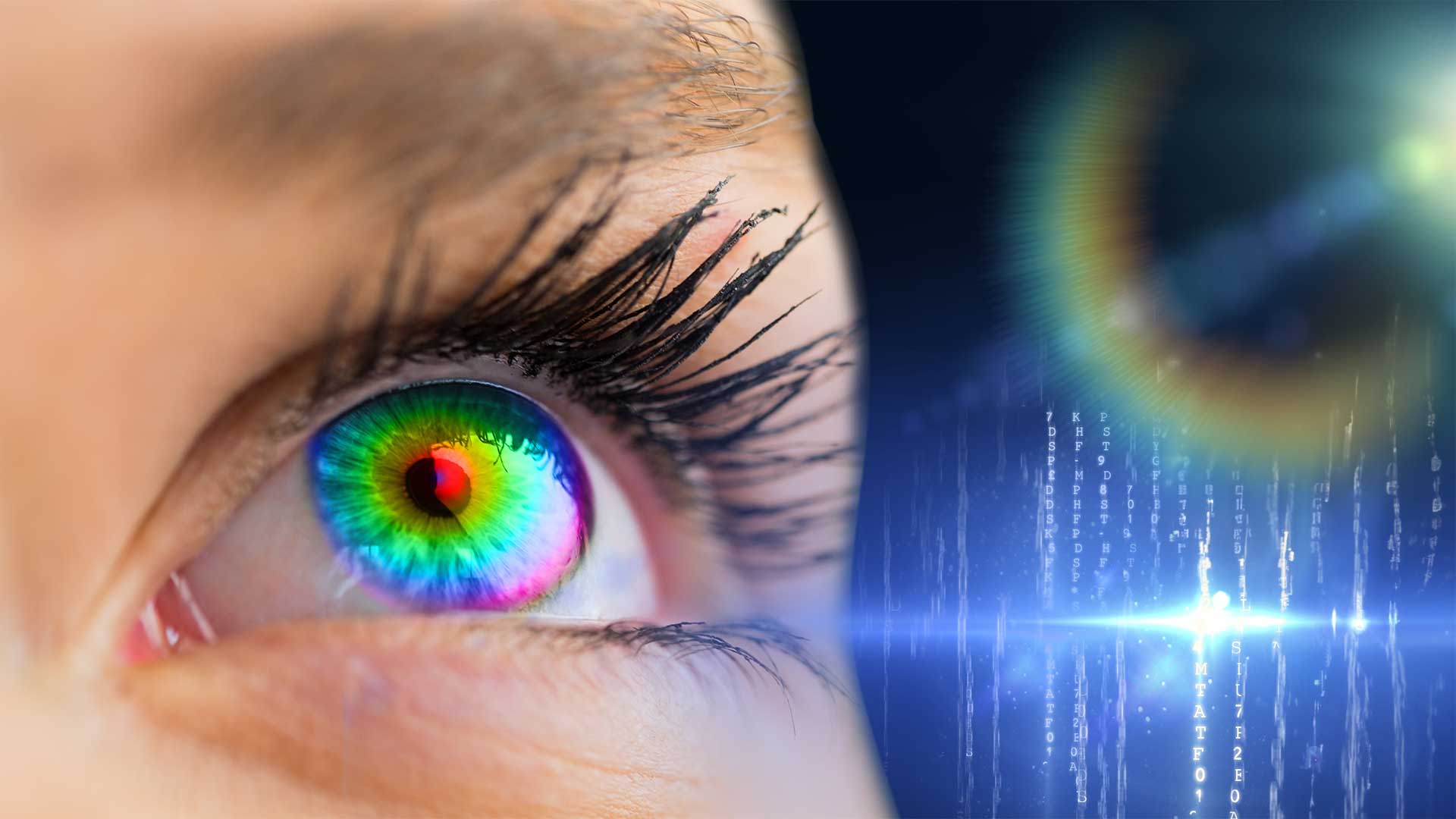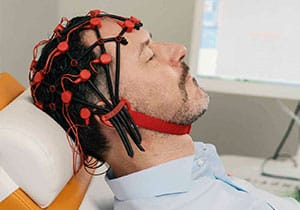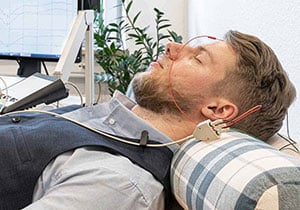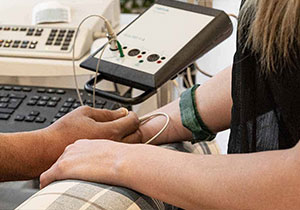
Audiovisual entrainment AVE
The principle of audiovisual stimulation is based on the stimulation of the central nervous system through special light and sound signals.
How do you imagine AVE to work?
The electrical activity of our brain is rhythmic and appears as “brain waves” of different frequencies when measured using EEG (electroencephalography). Both internal processes (e.g. concentration, relaxation, falling asleep…) and external stimuli can influence brain activity.
For example, when we listen to music with a slow rhythm, our brain waves slow down; the opposite is true for music with a fast rhythm. It is also known that flashing lights can affect brain waves. When a light flashes steadily in the eye, the brain is stimulated, causing brain waves to be brought to the same frequency as the flashing light by regulating brain centers (so-called entrainment or photic driving). If the light flashes faster, the brain frequency increases, whereas if the light flashes more slowly, brain activity slows down.
Neurotherapists benefit from this natural phenomenon because of its potential to change brain wave amplitudes and patterns and thus the functional states of the brain. Audio-visual entrainment (AVE) refers to the use of flashing lights and rhythmic sounds to target brainwaves towards a desired rhythm or specific EEG frequencies. By stimulating the brain with flashing lights in special glasses and pulsating sounds through headphones, it is possible to temporarily shift the frequency of the dominant brain waves in a desired direction for the duration of the stimulation, thereby altering brain function.
What does AVE do?
In simplified terms, our brains produce five basic brainwave states: gamma, beta, alpha, theta and delta.
A healthy and self-regulating brain will produce the appropriate brainwaves for a given situation. During sleep, the brain normally shows very low main frequency delta (1–4 Hz) activity and relatively small amounts of higher frequency theta, alpha and beta waves. During the waking state, the normal brain predominantly shows alpha and beta activity as the main frequencies.
When a healthy adult sits quietly in an alert but relaxed state or meditates, the brain shows a large increase in alpha activity (8–12 Hz) and slight theta activity (4–7 Hz) but relatively little delta or beta activity. On the other hand, a person who is alert and mentally active will show increased amounts of higher frequencies (13–20 Hz), and in the case of strong tension, e.g. in the context of stress or certain mental illnesses, even higher frequencies that hardly allow relaxation.
Stress can lead to an imbalance of neurotransmitters in the brain, resulting in an imbalance of brain activity, which is reflected in the brain frequency patterns. Certain diseases, genetic factors, brain injuries or other traumas can lead to an imbalance of brain activity in the human brain and thus to shifts in brain wave patterns for certain activities. People with sleep disorders, for example, do not produce enough theta or delta brain waves before going to sleep, and constant brooding leads to frequency shifts into the high beta range above 20 Hz. As a result, those affected feel constantly anxious and have problems relaxing. People with attention deficit disorder (ADD, ADHD) often produce too many slow waves in the attention areas in the forebrain, where beta activity normally helps to focus and control behavior.
In certain diseases, AVE can now be used to bring the wave patterns in the brain into a new rhythm and support the brain in its function. Although the effects initially only last for the duration of the stimulation, repeated use can often lead to permanent improvements in function. For people with sleep disorders, AVE can be used to down-clock the brain at very low theta to delta frequencies to improve slow wave production in the brain. For sufferers of anxiety and hypervigilance, AVE can be used to cause an increase in theta and alpha wave activity, allowing feelings of relaxation and regeneration. In the case of attention deficit, attempts can be made to improve the function of the frontal lobe by stimulating increased brain activity in the lower beta range of 12–16 Hz, which is associated with relaxed attention. Mood disorders such as depression and seasonal affective disorder can improve with AVE stimulation in the low and mid beta range (12–20 Hz).




